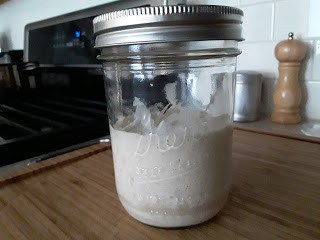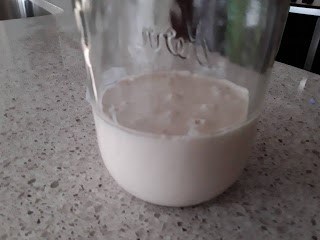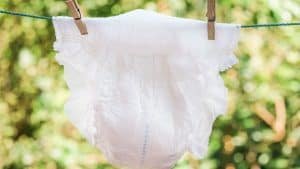
It’s almost summer and it’s getting warmer, but I’ve been craving homemade bread. Unfortunately, due to the pandemic, I have not been able to find yeast and very little flour at the market. So, just like a lot of people, I remembered that I could make delicious sourdough bread without any commercial yeast.
I did this many years ago when my children were young, and it was always a wonderful treat. Looking online for actual instructions, I was astounded at how complex this process has become. Some people only use a specific kind of flour, room temperature setting, weighing, etc.
That’s not the starter that I grew up with. Back in the day, we mixed whatever flour we had on hand with some tap water, put it in a jar on the counter, fed it once or twice a day and let it ferment until ready to use.
After reading all of the scientific explanations and pages and pages of how to begin, I decided to go back to basics and recreate the starter that was simple and always worked for me.
If the experiment did not turn out as expected, I’d just go buy a loaf of sourdough bread. Here goes my process:
Day 1
I mixed 1/2 cup plain, bleached, all-purpose flour with 1/4 cup room temperature water. I put the mixture in a clean mason jar, topped lightly with the lid and set it on the counter for 24 hours.

Day 2
The mixture was already beginning to bubble with some light hooch developing. I didn’t feed it; just stirred and put back on the counter until next morning.

Day 3
Beautiful and full of life! In the true baker’s tradition, it’s time to give him a name. Introducing Poquito – because he is a small batch. First feeding – stir, discard half, add 1/2 cup flour + 1/4 cup water. Back on the counter for 12 hours. (Changed flour at evening feeding.)

Day 4
No rise overnight, hooch developed and the aroma was a bit sour. Fed twice (12 hours apart) – discarded 1/2 of starter and added 1/2 cup of flour and 1/4 cup water.
Day 5
A few light bubbles with hooch but not much expansion. Fed twice (12 hours apart).
Days 6, 7 and 8
Surface bubbles forming with very little expansion and no hooch developing. Pleasant yeasty aroma. Continue feeding twice a day.

Day 9
Small bubbles throughout with a thin layer of hooch in the morning. Fed 1/4 cup starter, 1/4 water, 1/2 cup flour. Stirred throughout the day.
I was hoping for a quicker result, but I understand that it may take a bit longer. So, as long as it shows activity and has a nice aroma, I will be patient and feed when it seems hungry.
Day 10
More light bubbles had formed throughout. I noted a small rise and fall overnight. Fed in the morning only and stirred throughout the day.
Day 11
Great rise and fall overnight with a lovely yeasty aroma. It seems he may be a bit of a slow starter, but I think we’re on our way to some wonderful sourdough baking!

Days 12 and 13
Little Poquito was doing very well. The rise was becoming more consistent. I gave it a couple more days to become more stable before I could try cooking with it.

Day 14
Today was my first try at cooking with the discard. I didn’t have a lot so I made one large griddle cake (starter, sugar, salt and baking soda). It was delicious!

The starter is still taking 12 – 14 hours to fully rise so I don’t think we are quite ready for bread but I’m looking forward to trying all the wonderful discard recipes!
Notes
- During the first 2 weeks, I threw away all the discard.
- On day 3, I had to change the flour I was using, and I think it slowed the progress down a bit.
- After the first week, I changed feeding to once a day but noticed as it developed it needed 2 times a day again to stay well fed.
- Getting to know my starter and being patient really helped in this process.
So, what pandemic experiments did you attempt in the kitchen? Have you tried preparing a recipe from long ago? Did you make sourdough bread starter? How did you do? What recipe did you use? Please share in the comments!





